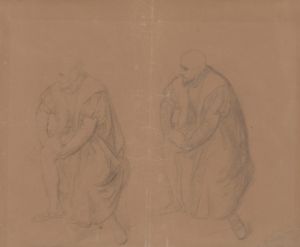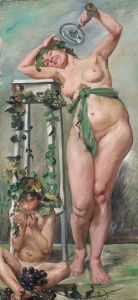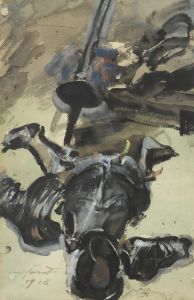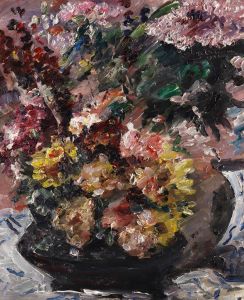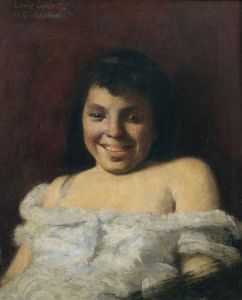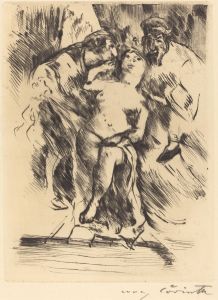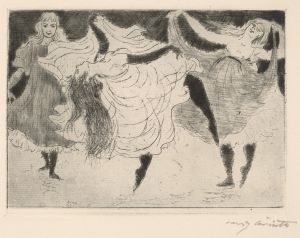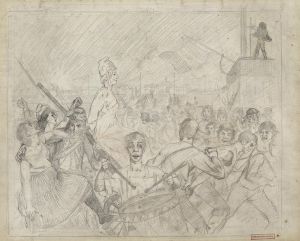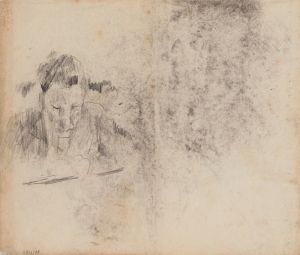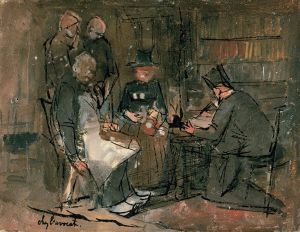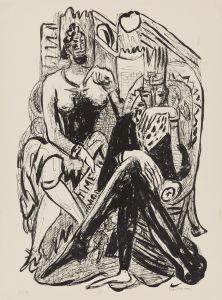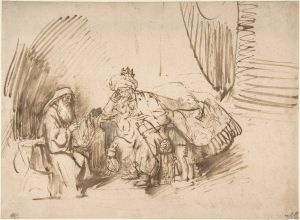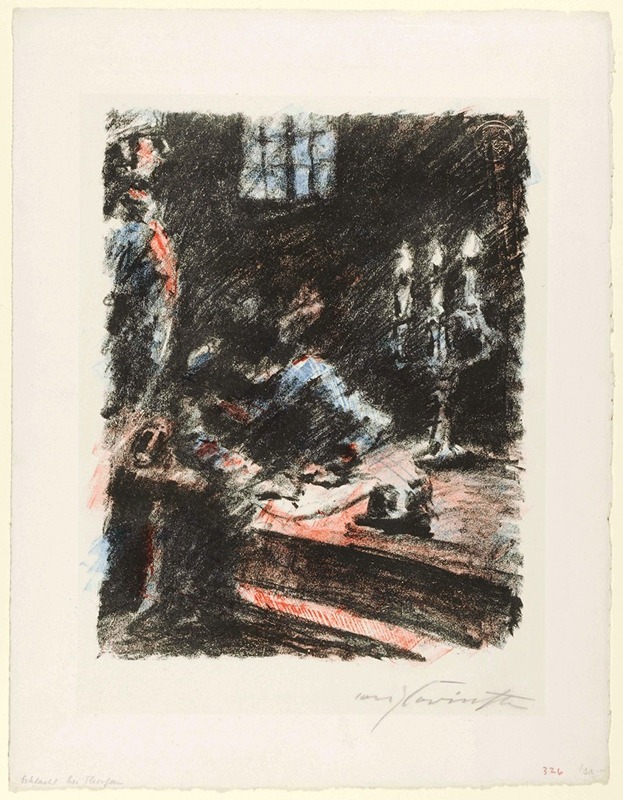
Torgau. Der König schreibt auf den Stufen des Altars
A hand-painted replica of Lovis Corinth’s masterpiece Torgau. Der König schreibt auf den Stufen des Altars, meticulously crafted by professional artists to capture the true essence of the original. Each piece is created with museum-quality canvas and rare mineral pigments, carefully painted by experienced artists with delicate brushstrokes and rich, layered colors to perfectly recreate the texture of the original artwork. Unlike machine-printed reproductions, this hand-painted version brings the painting to life, infused with the artist’s emotions and skill in every stroke. Whether for personal collection or home decoration, it instantly elevates the artistic atmosphere of any space.
Lovis Corinth, a prominent German painter and printmaker, created the painting "Torgau. Der König schreibt auf den Stufen des Altars" in 1909. Corinth was known for his vigorous brushwork and vibrant use of color, which placed him among the leading figures of the German Impressionist movement. His works often explored themes of history, mythology, and personal experience, reflecting a deep engagement with both contemporary and classical subjects.
The painting's title, translated as "Torgau. The King Writes on the Steps of the Altar," suggests a historical or narrative scene set in Torgau, a town in Germany with significant historical importance. Torgau is known for its Renaissance architecture and its role in the Protestant Reformation, as it was the site of the Torgau Articles, a precursor to the Augsburg Confession. However, the specific historical event or figure depicted in Corinth's painting is not explicitly documented, and the painting itself does not provide clear visual cues to identify the king or the exact context.
Corinth's style during this period was characterized by a transition from his earlier, more restrained academic approach to a freer, more expressive technique. This evolution is evident in "Torgau. Der König schreibt auf den Stufen des Altars," where the dynamic brushstrokes and rich palette convey a sense of movement and emotional intensity. The painting likely reflects Corinth's interest in capturing the psychological depth and drama of his subjects, a hallmark of his mature work.
The setting of the painting, presumably an altar, suggests a religious or ceremonial context, which aligns with Corinth's frequent exploration of themes related to spirituality and human experience. The presence of a king writing on the steps of an altar could symbolize a moment of introspection, decision-making, or divine inspiration, although the lack of specific historical references leaves the interpretation open to the viewer.
Corinth's work during this time was also influenced by his personal experiences and the broader cultural and artistic movements of the early 20th century. The period was marked by significant social and political changes in Germany, and artists like Corinth were responding to these shifts through their art. His paintings often reflect a tension between tradition and modernity, a theme that resonates in the ambiguous and layered narratives of his compositions.
"Torgau. Der König schreibt auf den Stufen des Altars" is a testament to Corinth's ability to blend historical and imaginative elements, creating works that invite contemplation and interpretation. While specific details about the painting's subject matter remain elusive, its artistic qualities and the context of Corinth's broader oeuvre offer insight into the painter's creative vision and the cultural milieu of his time.
In summary, Lovis Corinth's "Torgau. Der König schreibt auf den Stufen des Altars" exemplifies the artist's mature style and thematic interests, characterized by expressive brushwork and a focus on psychological and historical depth. Although the painting's exact narrative remains unclear, it stands as a significant piece within Corinth's body of work, reflecting the complexities and dynamism of early 20th-century German art.





